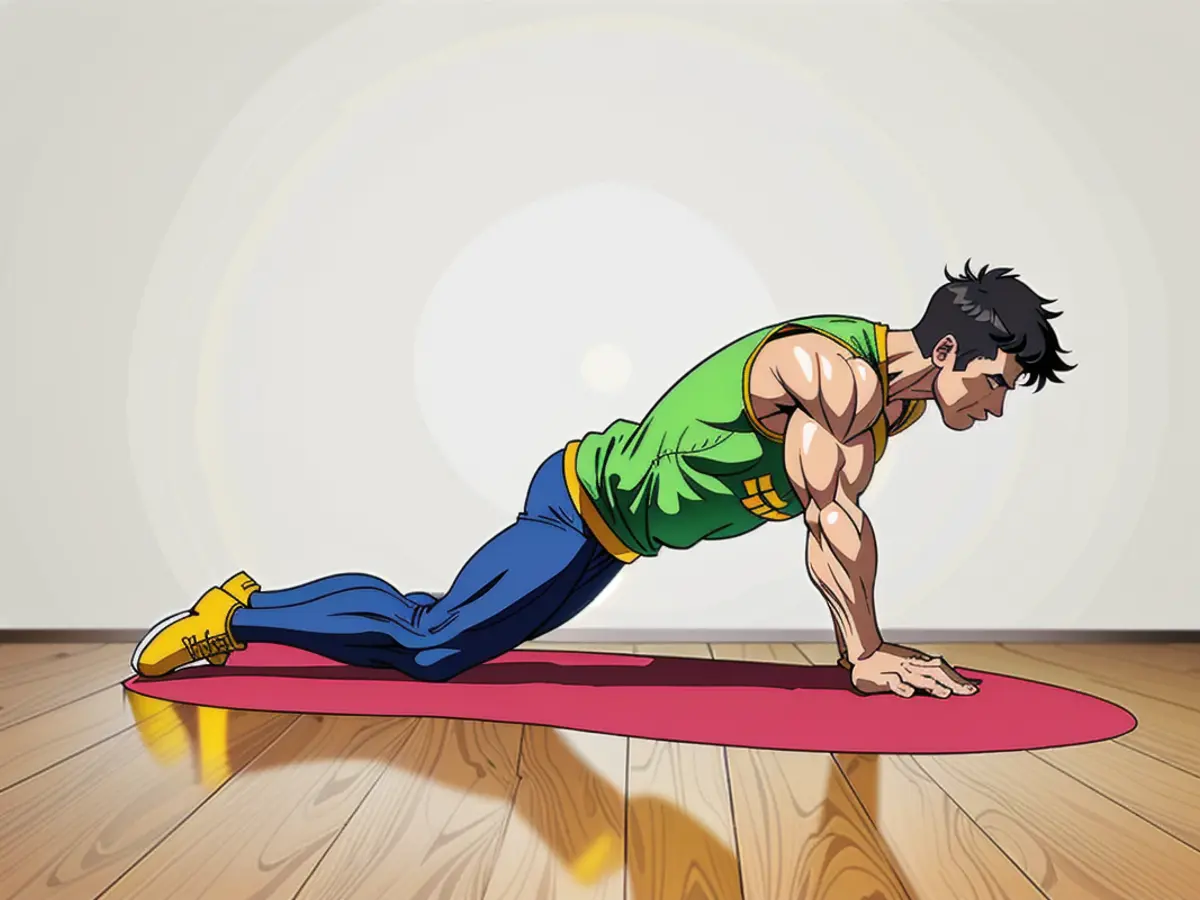Mastering the Plank: A Comprehensive Guide
Planking is a beloved yet hated exercise that strengthens your core, shoulders, arms, and glutes. With no equipment required and the ability to do it anywhere, planking is a simple yet effective bodyweight exercise.
Here's a guide on perfecting your plank and avoiding common mistakes:
Plank Variations

- Standard Plank:
- Position your hands slightly wider than shoulder-width apart, like for a push-up.
- Ground your toes and squeeze glutes for stability, while engaging your arms and legs.
- Look at a spot on the floor about a foot beyond your hands, maintaining a neutral neck and spine.
- Hold for 20 seconds, increasing duration as you become more comfortable.
- Forearm Plank:
- Place forearms on the floor with elbows aligned beneath shoulders and arms parallel to your body.
- If flat palms bother your wrists, clasp your hands together.
- Knee Plank:
- Much easier than a traditional plank, this variation is great for beginners.
- Rest your knees on the ground or a rolled-up mat to reduce stress on your lower back.
- Side Plank:
- Engage your obliques by lifting one leg over the other and propping your body up on your hand or elbow.
- Alternatively, make the plank easier by crossing the upper leg in front of your body for additional support.
- Single-Leg Plank:
- Increase demand on your core by lifting one leg towards the ceiling.
- Keep hips parallel to the floor, alternating legs.
- Medicine-Ball Plank:
- For added intensity, plant your hands on a medicine ball instead of the floor.
- Stabilize your body on the unstable ball, following the same steps as a standard plank.
Common Planking Mistakes

Collapsing your Lower Back
- Prevent lower back compromise by engaging your core.
- Maintain a flat torso with your belly button pulled in towards your spine.

Reaching your Butt to the Sky
- Avoid extending your back like in Downward Dog.
- Keep your back flat with abs engaged from the top to bottom while avoiding a sagging tush.

Letting your Head Drop
- Think of your head and neck as an extension of your back.
- Keep your head neutral, eyes on the floor, about a foot in front of your hands.

Forgetting to Breathe
- Allow oxygen to flow during exercise.
- Inhale deeply and exhale slowly.
Focusing too much on the stopwatch
- Prioritize quality over time.
- Maintain proper form, and take breaks if your form starts to suffer.
Incorporate planks at the end of your workout to strengthen your core and improve overall stability, gradually increasing hold time for better results.
Planking is not only beneficial for strengthening your core but also targets your shoulders, arms, and glutes, making it an excellent addition to any weight management strategy. To further enhance your workouts, exploring various plank variations like the standard plank, forearm plank, knee plank, side plank, single-leg plank, and medicine-ball plank can help engage different muscle groups and increase strength. Regular plank training can significantly contribute to your fitness goals, improving your bodyweight and overall physical strength.








